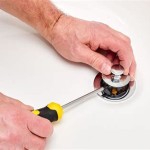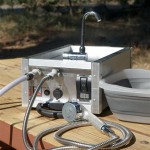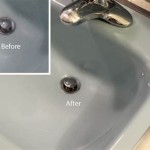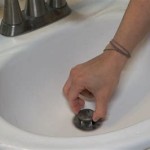Leaking Drain Pipe Under Sink
A leaking drain pipe under the sink is a common plumbing problem that can range from a minor annoyance to a significant issue if left unaddressed. Water damage, mold growth, and unpleasant odors are potential consequences of ignoring a leaky drain. Understanding the causes, identifying the leak's location, and employing appropriate repair methods are crucial for effectively resolving this issue.
Common Causes of Leaking Drain Pipes
Several factors can contribute to drain pipe leaks. Identifying the underlying cause is the first step towards implementing an effective solution. Common culprits include:
- Corroded Pipes: Older metal pipes are susceptible to corrosion over time, eventually leading to leaks.
- Loose Connections: Vibrations or improper installation can loosen the connections between pipe sections, causing leaks at the joints.
- Clogs: Blockages within the pipe can create pressure buildup, eventually leading to leaks in weak points.
- Damaged Pipes: Accidental impacts or freezing temperatures can crack or damage pipes, resulting in leaks.
- Failed Sealant: The sealant around pipe joints can dry out and crack, allowing water to seep through.
Locating the Leak
Pinpointing the exact location of the leak simplifies the repair process. A systematic approach is recommended:
- Dry the Area: Thoroughly dry the pipes and surrounding area with a towel.
- Visual Inspection: Carefully examine the pipes, joints, and connections for visible signs of water droplets or dampness.
- Paper Test: Dry the pipes again and place dry paper towels around suspected leak areas. Run water down the drain and observe which towel becomes wet first.
Repairing a Leaking Drain Pipe
Repair options vary depending on the leak's location, severity, and the material of the pipe. Common repair methods include:
- Tightening Slip Nuts: If the leak is at a slip nut connection, tightening the nut with pliers may resolve the issue. Be careful not to overtighten.
- Replacing the Slip Nut or Washer: A worn or damaged slip nut or washer should be replaced.
- Applying Pipe Putty or Thread Seal Tape: For threaded connections, applying fresh pipe putty or thread seal tape can create a watertight seal.
- Patching the Pipe: Small holes or cracks can be temporarily repaired with epoxy putty or a pipe repair clamp. This is generally a temporary fix and a more permanent solution is recommended.
- Replacing the Pipe Section: For severely damaged or corroded pipes, replacing the affected section is the most effective solution.
Tools and Materials
Having the correct tools and materials on hand simplifies the repair process. Essential items may include:
- Pliers: For tightening or loosening slip nuts.
- Adjustable Wrench: For various plumbing tasks.
- Pipe Wrench: For working with larger pipes.
- Basin Wrench: For accessing hard-to-reach nuts under the sink.
- Screwdriver: For removing and installing screws.
- Pipe Cutter: For cutting PVC pipes.
- Plumber's Putty: For sealing threaded connections.
- Thread Seal Tape (PTFE Tape): For sealing threaded connections.
- Bucket: For collecting water.
- Towels: For drying the area.
Prevention Tips
Preventing leaks is often easier and less costly than repairing them. Consider these preventative measures:
- Regular Inspections: Periodically inspect the pipes under the sink for signs of corrosion, leaks, or loose connections.
- Avoid Chemical Drain Cleaners: Harsh chemical drain cleaners can damage pipes over time. Use natural alternatives or a drain snake instead.
- Proper Disposal of Grease and Food Scraps: Avoid pouring grease or food scraps down the drain, as they can clog pipes and create pressure buildup.
- Insulate Pipes in Cold Climates: Insulating exposed pipes can prevent them from freezing and cracking during winter.
When to Call a Professional Plumber
While some drain pipe leaks can be repaired with basic DIY skills, certain situations warrant calling a professional plumber:
- Extensive Damage: If the leak is severe or involves significant pipe damage.
- Recurring Leaks: If leaks persist after attempted repairs.
- Lack of Experience: If you are uncomfortable working with plumbing or lack the necessary tools and expertise.
- Sewage Backup: If the leak involves sewage or wastewater, it's crucial to call a professional plumber immediately.

4 Simple Ways To Fix A Leaky Sink Drain Pipe Wikihow

How To Repair A Leaking Sink Trap

How To Fix Or Replace A Leaky Sink Trap Hometips

4 Simple Ways To Fix A Leaky Sink Drain Pipe Wikihow

How To Fix Kitchen Sink P Trap Leaking Pipe Connection Nut Youtube

Why Is My Kitchen Sink P Trap Leaking At Connection Nut

Leak How To Fix Leaking Bathroom Sink Drain Where Pvc Meets Abs Connection Home Improvement Stack Exchange

Quick Tip For A Kitchen Sink Drain That Is Leaking

How To Remove A Leaky Pipe Under The Kitchen Sink Wellsons

How To Clean Out A Sink Trap Bailey Brothers Plumbing







